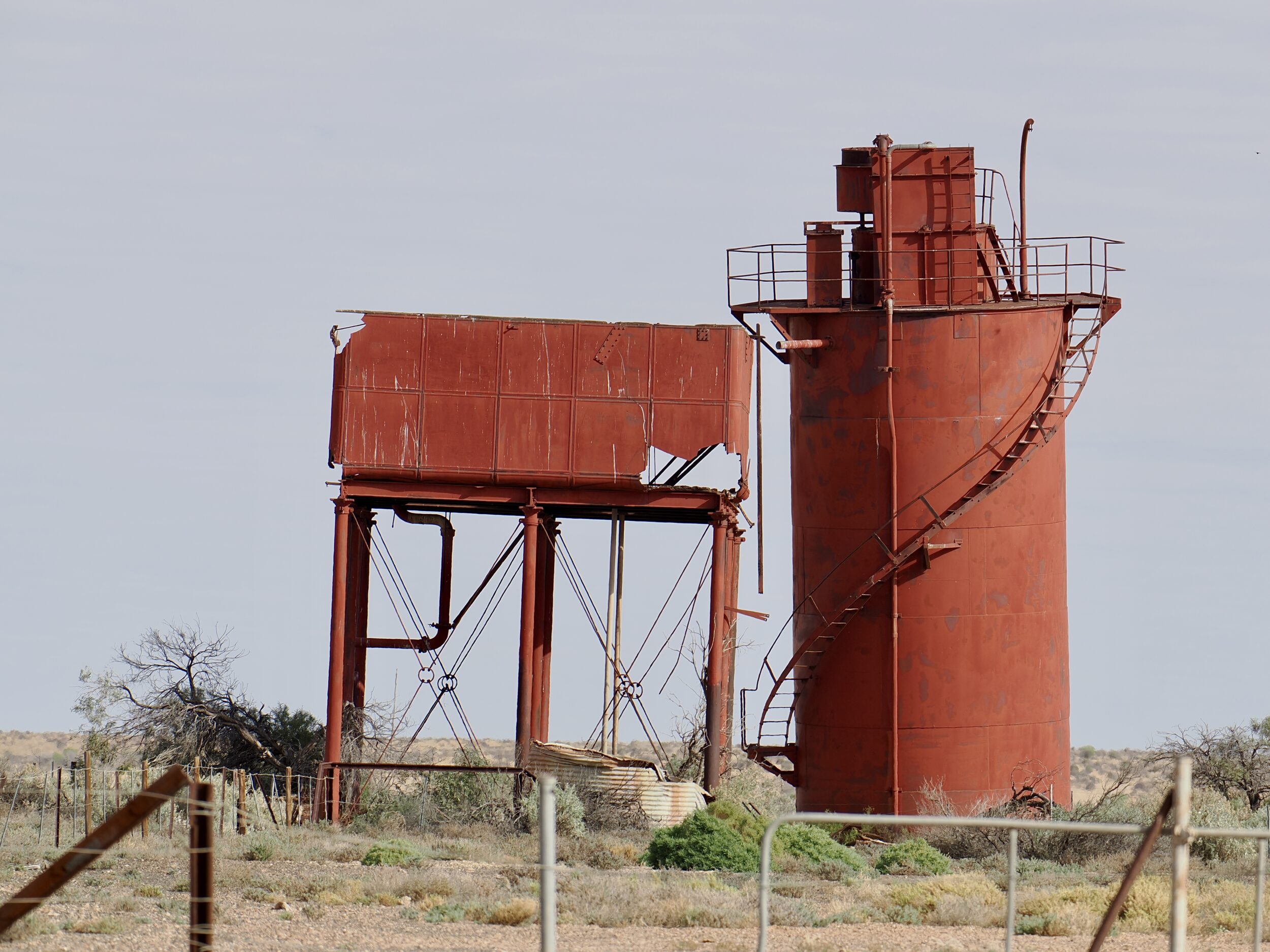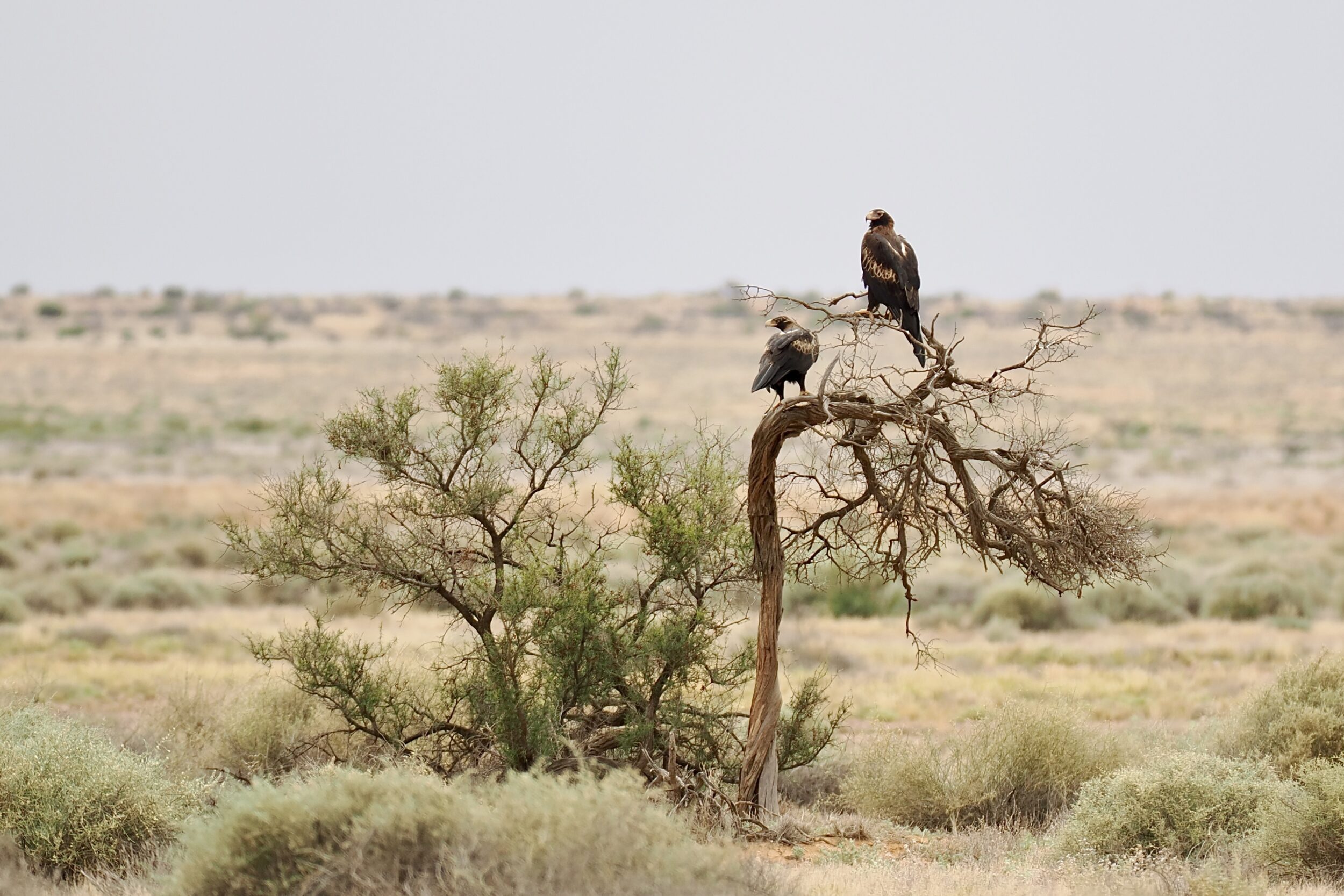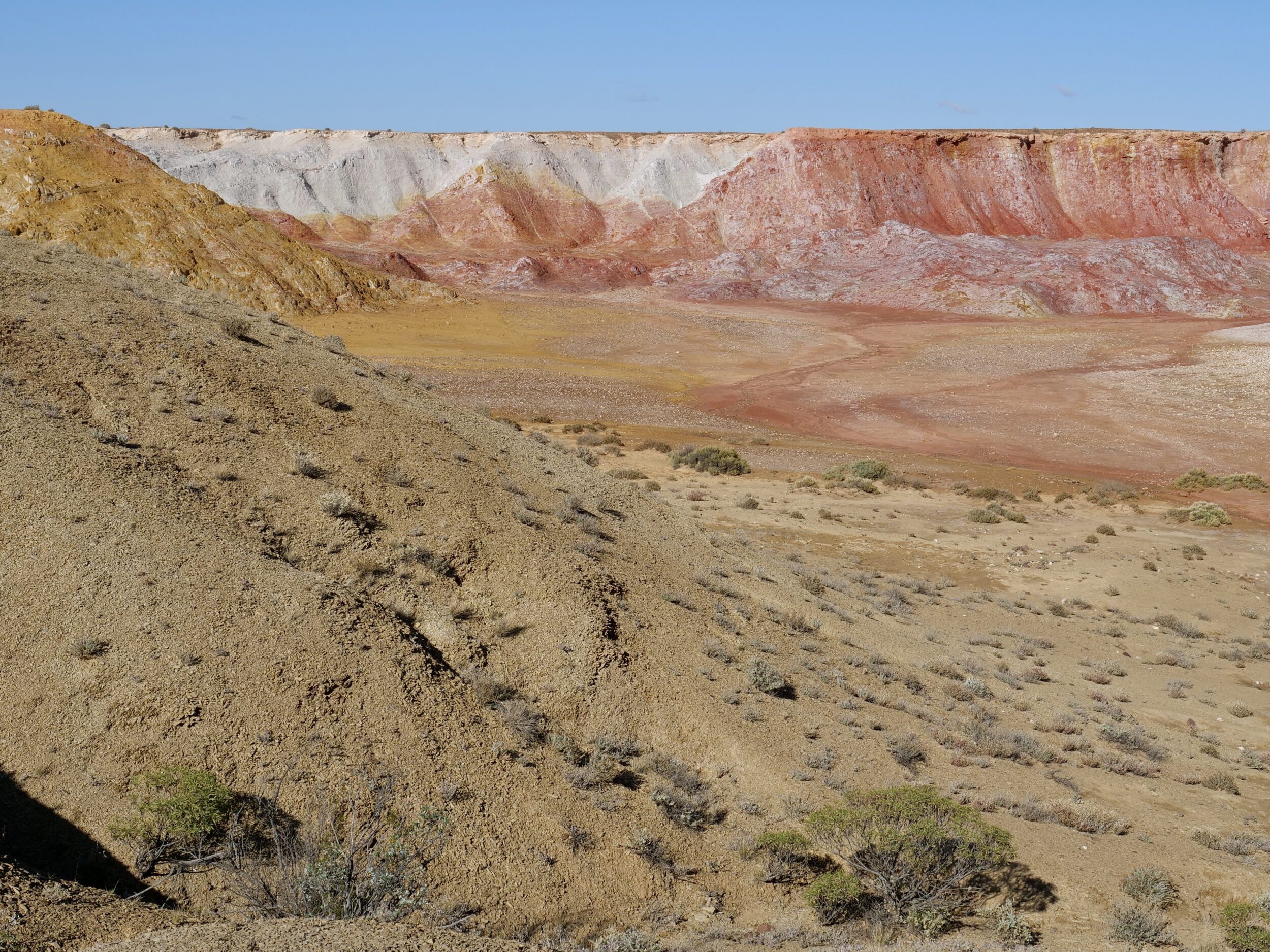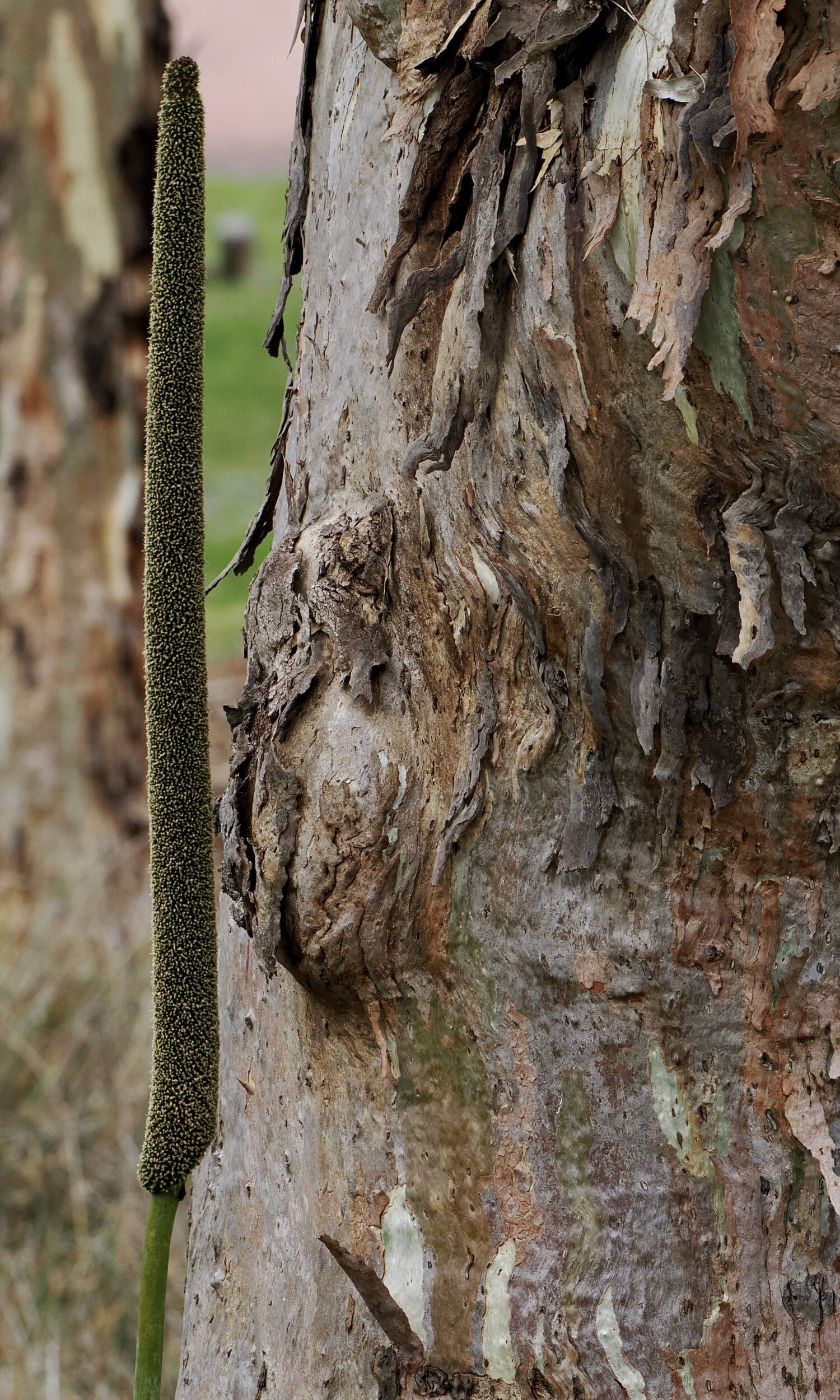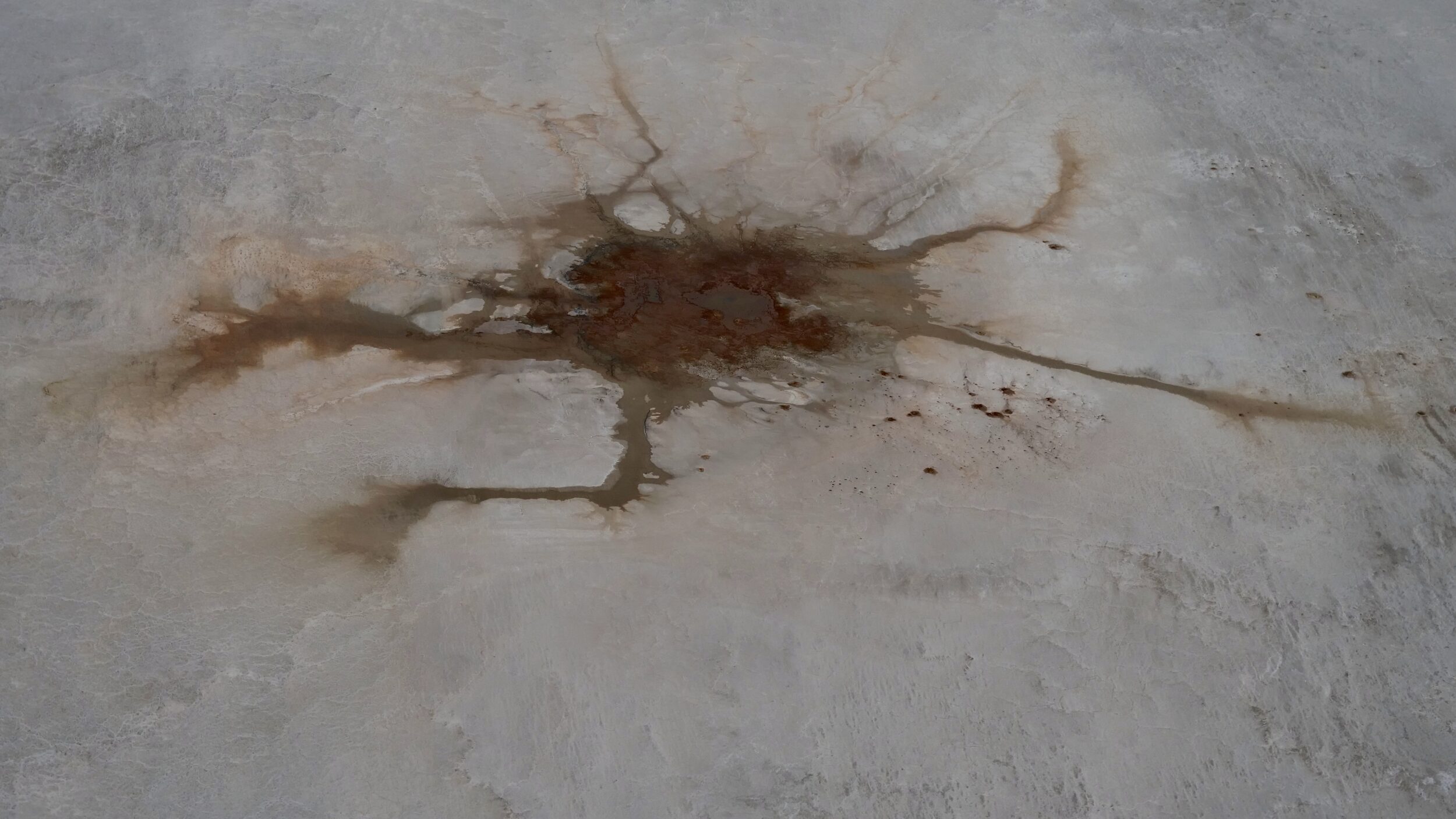The Curdimurka rail siding – near Lake Eyre South in the SA outback – saw its first train in 1888.
The last one went through in 1980, nearly three decades after the pictured water tank and gigantic water softener lost their raison d’être, when diesel electrics replaced steam locomotives in 1951.
This “big softie” was erected in 1943-44, so its working life was very brief.
2 Comments